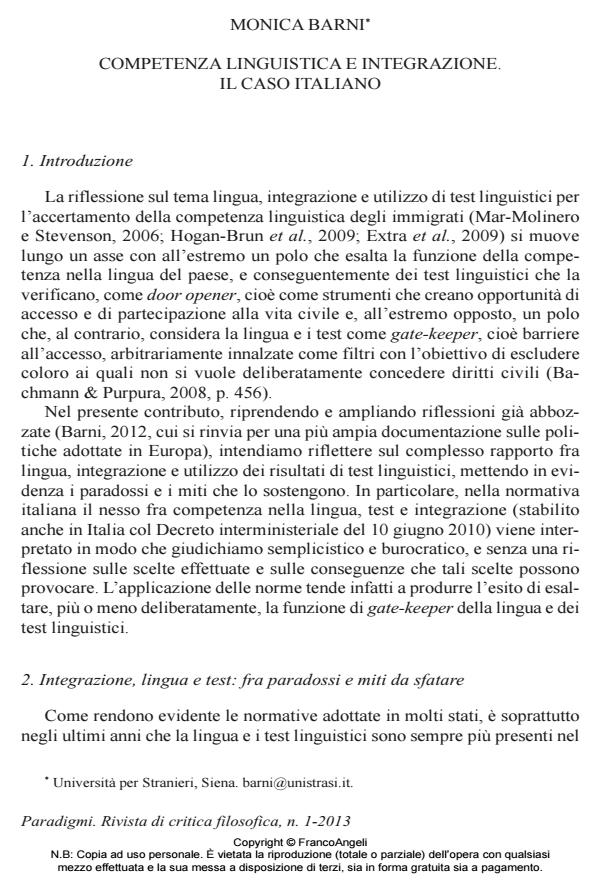Language Proficiency and Integration. The Italian Case
Journal title PARADIGMI
Author/s Monica Barni
Publishing Year 2013 Issue 2013/1
Language Italian Pages 11 P. 139-149 File size 153 KB
DOI 10.3280/PARA2013-001009
DOI is like a bar code for intellectual property: to have more infomation
click here
Below, you can see the article first page
If you want to buy this article in PDF format, you can do it, following the instructions to buy download credits

FrancoAngeli is member of Publishers International Linking Association, Inc (PILA), a not-for-profit association which run the CrossRef service enabling links to and from online scholarly content.
The use of language and the results of language tests as a guarantee of the integration of immigrants is widespread in many European and non-Europeans coun- tries, but this relationship is questionable, both from the theoretical and the applicative point of view. In particular, the Italian legislation is driven primarily by symbolic, bureaucratic and centralist intents of linguistic policy. Language and tests assume a function of "gate-keepers", filters, barriers, rather than "door-openers", that is, tools that create opportunities for access and participation in society.
Keywords: Civil rights, Immigration, Integration policy, Italian language, Language proficiency, Language tests
- Local Language Testing Sabrina Machetti, Paola Masillo, pp.171 (ISBN:978-3-031-33540-2)
Monica Barni, Competenza linguistica e integrazione. Il caso italiano in "PARADIGMI" 1/2013, pp 139-149, DOI: 10.3280/PARA2013-001009